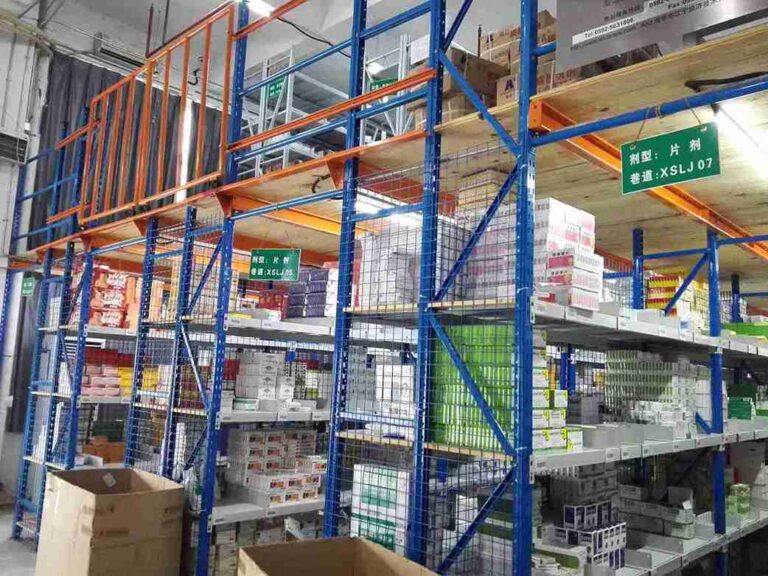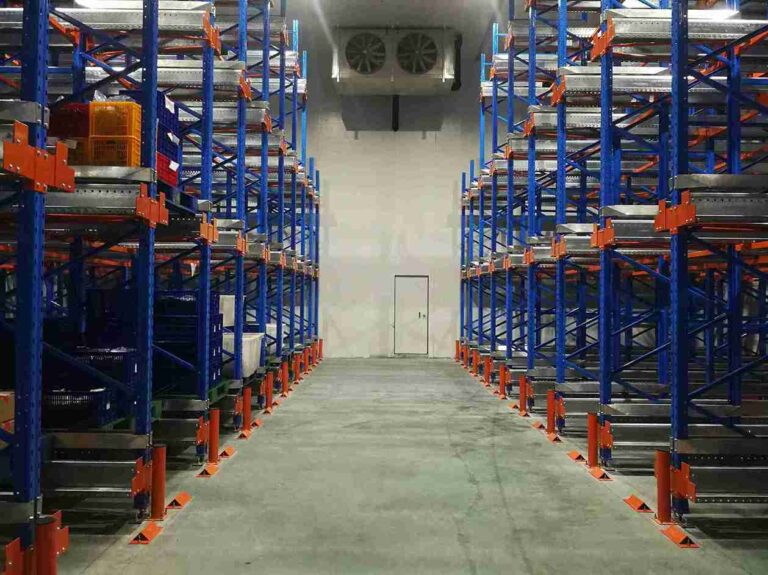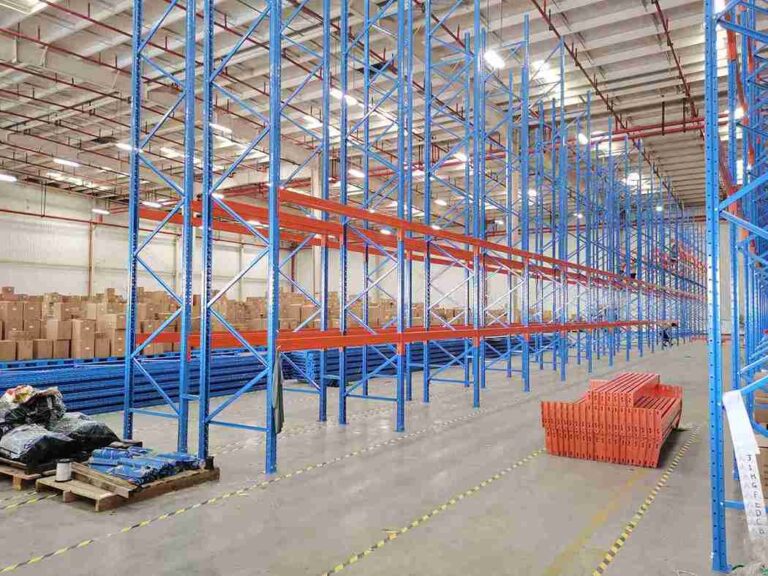📐 "First 50 Enterprise Queries Get Custom 3D Warehouse Design" Plan

Heavy-Duty Step Beam Racking: The Definitive Guide to a Fully Customized Warehouse Layout
In the high-stakes world of global logistics and warehousing, the storage system is the silent, unyielding backbone of the entire operation. It is the difference between seamless profitability and chaotic, costly inefficiency. For countless warehouse managers facing the relentless pressure of SKU proliferation, shrinking order cycles, and soaring real estate costs, the conventional approach to storage—fitting a standard system into a unique space—is a recipe for constrained growth.
The modern solution demands a paradigm shift: a storage environment that is not merely installed, but intelligently architected. This definitive guide explores the transformative potential of a heavy-duty step beam racking system, when it is meticulously engineered and fully customized for your warehouse layout. It is a deep dive into how this specific class of storage solution, when executed with precision, becomes the most strategic investment a business can make in its operational future, transcending its role as simple infrastructure to become a dynamic, profit-driving asset.

Beyond the Basics: The Engineering Marvel of Heavy-Duty Step Beam Racking
To appreciate the profound impact of a customized system, one must first understand the fundamental engineering superiority of the heavy-duty step beam racking design. This is not a minor iteration on standard shelving; it is a purpose-built structural system designed for the rigors of industrial material handling. The entire philosophy of step beam racking revolves around achieving maximum strength with optimal material use, creating a system that is both incredibly robust and remarkably adaptable.
Deconstructing the Components: A Symphony of Roll-Formed Steel
The integrity of any step beam racking system rests on the symbiotic relationship between its two primary components: the upright frames and the step beams themselves.
-
The Upright Frames – The Vertical Pillars: In a heavy-duty step beam racking application, the upright frames are the load-bearing vertebrae of the entire structure. They are manufactured from high-tensile steel and are characterized by their distinctive stepped profile. This stepping is a critical engineering feature, not an aesthetic afterthought. Each step is a precision-engineered slot that provides a positive, secure landing for the horizontal beams.
- This design facilitates a direct transfer of pallet loads from the beam directly into the frame, creating a phenomenally stable connection without the stress concentrations and potential for loosening associated with bolted connections. The design of the upright frame in a true heavy-duty step beam racking system is what allows it to safely support loads often exceeding 3,000 kg per beam level.
-
The Step Beams – The Horizontal Workhorses: These roll-formed horizontal members are the shelves of the system. Their engineered profile is a masterpiece of industrial design, creating an exceptionally high strength-to-weight ratio. They slide seamlessly into the stepped slots of the upright frames, and a simple, yet utterly reliable, safety lock (a pin or clip) is engaged to prevent accidental displacement. The elegance of this connection is its speed and certainty, allowing for rapid installation and effortless reconfiguration down the line. The beam’s design in a step beam racking system ensures consistent performance under dynamic loads, such as the impact of a pallet being placed by a forklift.
The “Heavy-Duty” Distinction: Defining a Class of Performance
The term “heavy-duty” in the context of step beam racking signifies a specific performance category, demarcating it from lighter-duty alternatives. This classification is defined by several tangible factors:
-
Material Thickness and Steel Grade: The components of a heavy-duty step beam racking system utilize thicker gauge, high-yield strength steel. This isn’t just “stronger” steel; it’s steel formulated to withstand the constant cyclical loading and minor impacts of an industrial environment without compromising its structural integrity.
-
Load Capacity Specifications: While light-duty systems may handle up to 1,500 kg per level, a heavy-duty step beam racking system is typically rated for loads starting at 2,500 kg and can be engineered to support significantly more. This makes it the unequivocal choice for storing dense products like automotive parts, building materials, industrial chemicals, and packaged foods in bulk.
-
Manufacturing Tolerances and Quality Control: The manufacturing process for heavy-duty step beam racking is subject to far stricter tolerances. Every component must be identical and perfectly formed to ensure the system’s legendary stability and safety. This level of precision is what allows a step beam racking system to be both strong and flexible.
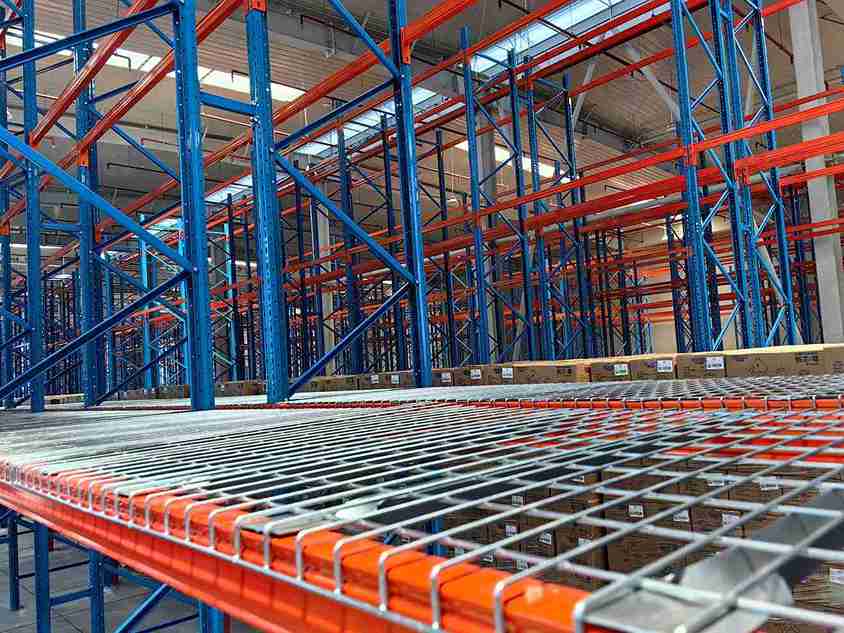
The High Cost of Compromise: Why Off-the-Shelf Racking Fails Modern Warehouses
The allure of a pre-configured, standard-dimension step beam racking system is understandable: it appears to offer a quicker, simpler, and less expensive path to a solution. However, this approach is fundamentally flawed, forcing a unique and dynamic operation into a static, generic box. The long-term operational and financial penalties of this compromise are severe.
-
The Cubic Space Dilemma: Warehouses are defined by their three-dimensional space—their cubic volume. A standard step beam racking system, with its fixed heights and bay depths, will almost never perfectly fill this volume. The result is wasted air space above the top beam or awkward, unusable gaps that represent lost revenue potential. A customized warehouse layout, in contrast, is designed to conquer the cube, utilizing every possible inch from floor to ceiling.
-
The Operational Friction of Standard Aisles: Aisles are the circulatory system of a warehouse. Their width dictates the type of Material Handling Equipment (MHE) that can be used and the efficiency with which it can operate. A standard system imposes its own aisle widths, which may be too wide for efficient narrow-aisle forklifts or dangerously narrow for a conventional counterbalance forklift. This leads to slower travel times, increased product damage from collisions, and elevated operator stress. A customized warehouse layout designs the aisles around the specific MHE, creating a harmonious and efficient workflow.
-
The Safety Illusion: Perhaps the most critical failure of a non-customized system is the compromise on safety. Forcing standard step beam racking into a space with uneven floors, obstructive columns, or unusual dimensions often leads to field modifications that fall outside the manufacturer’s certified engineering parameters. The rack might be standing, but its load capacity and seismic resilience are now unknowns. A customized warehouse layout from the outset accounts for all these variables, ensuring the final installed <b>step beam racking system is not only operational but certifiably safe.
The Architect’s Blueprint: A Methodical Process for Total Customization
Achieving a perfectly customized warehouse layout is not a product one simply orders; it is a destination reached through a rigorous, collaborative process. This methodology transforms the generic potential of step beam racking into a precise tool for operational excellence.
Phase 1: The Comprehensive Operational Diagnosis
This initial phase is about immersion and understanding. It goes far beyond taking measurements.
-
Facility Forensic Analysis: Using advanced laser scanning technology, experts capture a millimeter-accurate digital twin of the warehouse. This model includes every column, door, sprinkler head, light fixture, and floor level variation. This data forms the immutable boundaries within which the customized warehouse layout must be created.
-
Inventory Dynamics Profiling: A deep analysis of the inventory is conducted. This is not just a list of pallet sizes. It involves categorizing SKUs by weight, dimensions, turnover velocity (using ABC analysis), and special requirements (e.g., hazmat, temperature sensitivity). The goal is to understand the “what” and “how often” of every item to be stored.
-
Material Handling Equipment Synergy Study: The interaction between the racking and the MHE is paramount. The specifications of every forklift, reach truck, or order picker are analyzed—including their lift heights, turning radii, and mast dimensions—to ensure the proposed step beam racking layout facilitates, rather than hinders, their operation.
-
Workflow and Throughput Mapping: Consultants map the entire flow of goods, from receiving to dispatch, identifying bottlenecks, cross-traffic patterns, and opportunities for process improvement. The new step beam racking system must be designed to streamline this flow, not just store goods.
Phase 2: Virtual Prototyping and Dynamic Simulation
With a mountain of raw data, the engineering phase begins. This is where the customized warehouse layout takes form in a virtual environment.
-
Configurational Modeling: Engineers use sophisticated CAD and warehouse simulation software to model various step beam racking configurations. They will test selective, double-deep, drive-in, and push-back layouts against the client’s inventory profile to determine the optimal mix for density and accessibility.
-
Structural and Load Engineering: Every component of the proposed heavy-duty step beam racking system is specified based on calculated loads. This includes selecting the exact upright frame capacity and the correct beam profile and length to ensure deflection remains within safe limits. For regions with seismic activity, dynamic load calculations are performed to ensure compliance with local building codes.
-
Performance Simulation: The virtual model is stress-tested. Software can simulate a day’s worth of activity, showing how operators and MHE will interact with the tep beam racking system. This can reveal potential congestion points before a single piece of steel is ever manufactured, allowing for pre-emptive optimization.
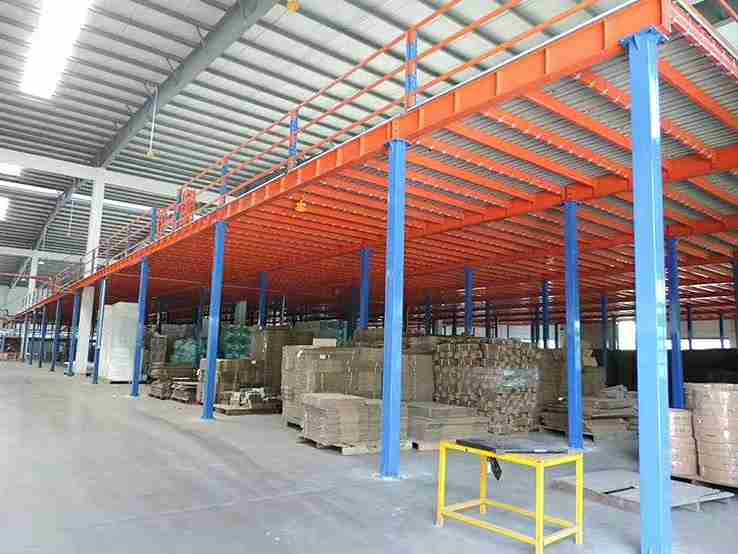
The Automation-Ready Warehouse: Integrating Step Beam Racking with Future Technologies
A customized warehouse layout built upon a precision-engineered step beam racking system is the ideal springboard for automation. The predictability, accuracy, and consistency of a custom layout are non-negotiable prerequisites for the successful implementation of advanced technologies.
-
The Foundation for AGVs and AS/RS: Automated Guided Vehicles (AGVs) and Automated Storage and Retrieval Systems (AS/RS) require an environment of extreme precision. The step beam racking in these applications must be positioned with laser-like accuracy to ensure robotic arms and shuttles can interface with them perfectly. The inherent stability and precision of a heavy-duty step beam racking system make it the preferred choice for such integrations.
-
Enabling a Digital Twin: A customized warehouse layout creates a perfect 1:1 relationship between the physical racking and its digital representation in a Warehouse Management System (WMS). This “digital twin” allows for incredibly efficient slotting, where the WMS can direct put-away and picking based on the most optimal paths within the actual, physical confines of the step beam racking system.
-
Synergy with Voice and Pick-to-Light: Technologies like voice-picking and pick-to-light systems achieve their maximum efficiency gains when operating in a logically organized, consistently structured environment. A haphazard racking layout confuses these systems and their human operators. A well-planned step beam racking layout provides the logical structure that allows these technologies to shine, drastically reducing pick times and errors.
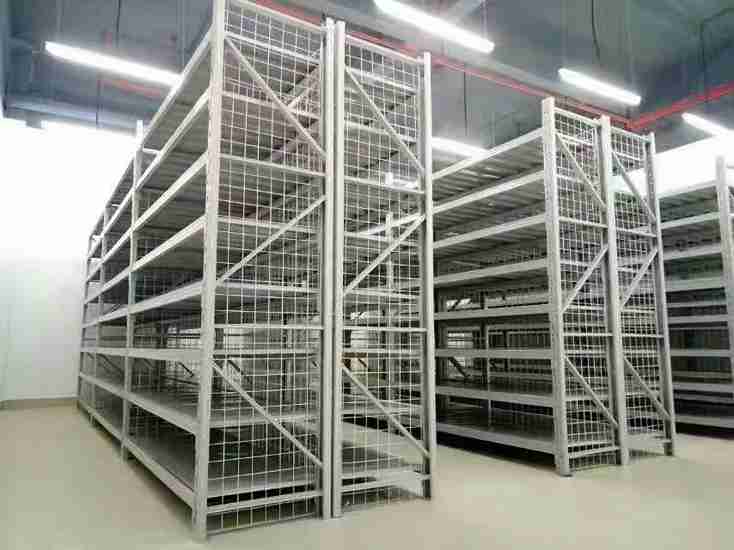
A Tapestry of Global Success: Case Studies in Customized Step Beam Racking
The theoretical advantages of a customized warehouse layout are compelling, but they are proven in the tangible results achieved across diverse global markets.
Case Study 1: Automotive Parts Distributor, Bangkok, Thailand
-
Challenge: A 15,000 sq. meter facility was operating at 115% capacity, relying on a chaotic mix of outdated racking and floor-stacking. Damage rates were high, and order fulfillment times were unsustainable.
-
Customized Step Beam Racking Solution: A comprehensive analysis led to a multi-zone customized warehouse layout. The solution incorporated:
-
High-Density Selective Step Beam Racking: For fast-moving SKUs, maximizing accessibility.
-
Double-Deep Step Beam Racking: For bulk storage of slower-moving items, doubling the storage footprint in designated areas.
-
Narrow Aisles: Precisely calibrated for a new fleet of narrow-aisle reach trucks.
-
-
Result: A 60% increase in storage capacity, a 45% reduction in order picking times, and a dramatic drop in product damage. The new step beam racking system provided the scalability needed for planned business growth.
Case Study 2: Food and Beverage Exporter, Guadalajara, Mexico
-
Challenge: A need to expand cold storage capacity without constructing a new building. The existing freezer needed to store a wider variety of pallet sizes, including non-standard dimensions for export markets.
-
Customized Step Beam Racking Solution: The project focused on maximizing density in a high-energy-cost environment. The customized warehouse layout featured:
-
Multi-Tiered Step Beam Racking: Utilizing the full 15-meter clear height of the freezer.
-
Adjustable Beam Levels: Allowing for complete flexibility to accommodate changing pallet heights.
-
Reinforced Decking: To handle the extra weight of palletized canned goods.
-
-
Result: Storage capacity within the existing freezer was increased by over 90%. The flexibility of the step beam racking system allowed the client to adapt to seasonal product changes effortlessly, making the operation vastly more responsive and cost-effective.
The Partner Imperative: Why Expertise Trumps Componentry in Customized Racking
The steel used in a heavy-duty step beam racking system, while critical, is a commodity. The true value—the element that transforms metal components into a competitive advantage—is the intellectual capital and experiential knowledge of the partner you choose. A provider with deep domain expertise brings far more to the table than a product catalog. They bring a wealth of tacit knowledge about international standards, regional best practices, and the nuanced challenges of different industries.
They understand how a step beam racking system behaves in the high humidity of Southeast Asia versus the arid climate of the Middle East. They can anticipate challenges related to local supply chains and installation crews. This expertise is the bedrock of the EEAT (Experience, Expertise, Authoritativeness, Trustworthiness) principles that Google prioritizes, and more importantly, it is the foundation of a successful, long-term partnership that delivers a customized warehouse layout that performs as promised.
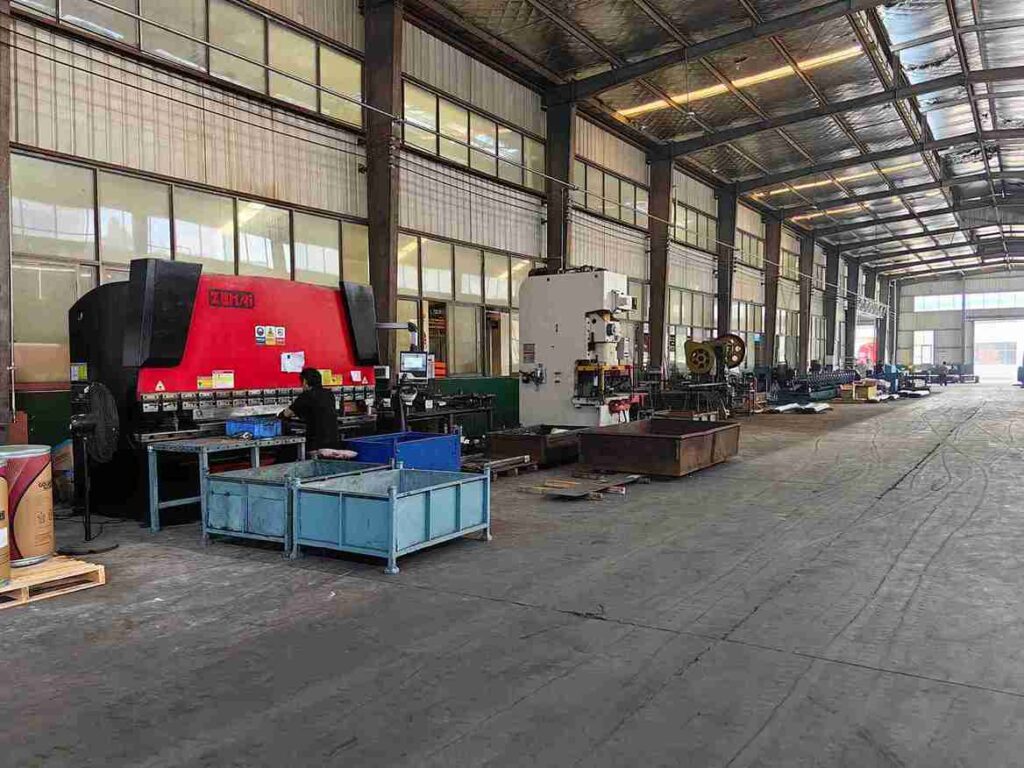
Conclusion: From Static Storage to Dynamic Competitive Advantage
The evolution of the modern warehouse is a story of moving from passive storage to active, intelligent logistics hubs. In this new era, the storage system can no longer be an afterthought or a generic purchase. It must be a core strategic asset. A heavy-duty step beam racking system, when conceived and executed as a fully customized warehouse layout, represents the pinnacle of this evolution. It is a system that respects the uniqueness of your operation, embraces the specifics of your workflow, and is engineered to adapt to your future.
It is the foundation upon which faster fulfillment, lower operational costs, and superior scalability are built. The critical question for any logistics or warehouse manager is no longer about finding storage, but about investing in a system designed for victory in the demanding landscape of global commerce.
Frequently Asked Questions (FAQs)
1. How does the load capacity and stability of heavy-duty step beam racking compare to structural racking in high seismic zones?
Both systems can be engineered for seismic zones, but they approach the challenge differently. Structural racking, with its welded connections, is inherently rigid. Heavy-duty step beam racking, while incredibly strong, has a slight degree of flexibility at its bolt-free connections, which can be an advantage in dissipating seismic energy. The key is not the system type, but the quality of the seismic engineering behind it. A properly engineered step beam racking system, with specialized bracing and load calculations for seismic forces, will meet and often exceed local code requirements, offering a robust and compliant solution.
2. We have a project that requires very rapid deployment. Can a customized step beam racking system be delivered quickly?
While true customization requires a thorough process, an experienced provider can streamline timelines significantly. The use of laser scanning accelerates the design phase, and modern manufacturing workflows are highly efficient. While a completely custom project may take 12-16 weeks, providers can often offer “fast-track” options for critical projects by leveraging standard component sizes within a custom layout or prioritizing manufacturing slots. The emphasis should be on “right” rather than “fast,” but a competent partner will work aggressively to meet aggressive deadlines without compromising the integrity of the customized warehouse layout.
3. What are the long-term maintenance and inspection requirements for a heavy-duty step beam racking system?
Like all critical infrastructure, a heavy-duty step beam racking system requires a formal inspection and maintenance protocol. It is recommended that trained personnel conduct a visual inspection quarterly, with a more thorough, documented annual inspection by a qualified engineer. The inspection focuses on looking for beam deflection, damage to upright frames (especially from forklift impacts), the integrity of safety locks, and ensuring all components are plumb and secure. The provider should offer inspection services and a ready supply of replacement parts, such as safety locks or specific beam lengths, to ensure the long-term health and safety of the installation.
4. Can you integrate mezzanine structures directly into a step beam racking system to create multi-level platforms?
Absolutely. This is a powerful way to maximize cube utilization and is a common feature of advanced customized warehouse layouts</b>. A step beam racking> system can be specifically engineered to serve as the primary support structure for a mezzanine. The upright frames are designed to handle the additional load, and the mezzanine deck is integrated seamlessly. This creates a highly efficient, multi-level operation for order picking, parts storage, or office space, all within the same footprint. This integration must be part of the initial design, as the racking components will be specified to carry the significant additional loads.
5. For a business with a limited initial budget, is it possible to phase the implementation of a customized step beam racking layout?
A well-designed customized warehouse layout is inherently scalable and perfect for phased implementation. The master plan is designed all at once, ensuring that every phase fits together perfectly in the end. The installation can then be executed in stages—for example, starting with the high-density bulk storage area in Phase 1, followed by the fast-picking zone in Phase 2. The modular nature of step beam racking makes this straightforward. This approach allows a business to match capital expenditure with cash flow while still working towards the complete, optimized vision of their storage facility.
If you require perfect CAD drawings and quotes for warehouse racking, please contact us. We can provide you with free warehouse racking planning and design services and quotes. Our email address is: jili@geelyracks.com

